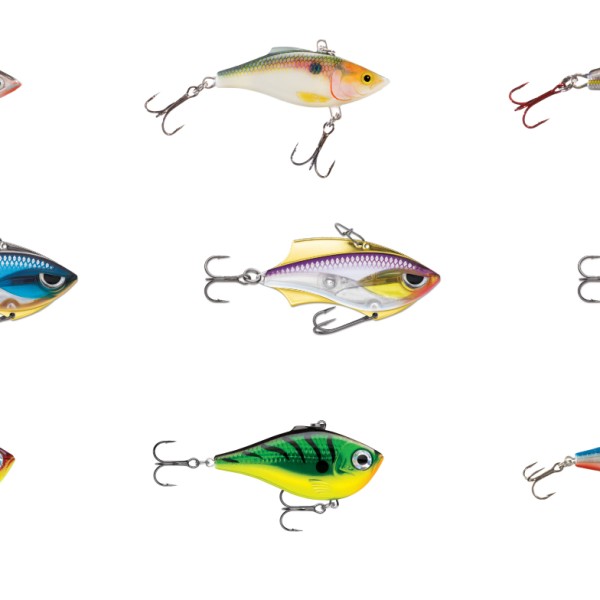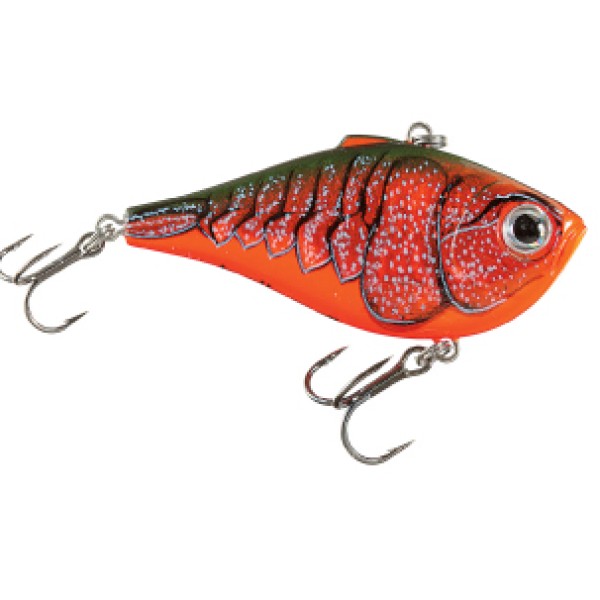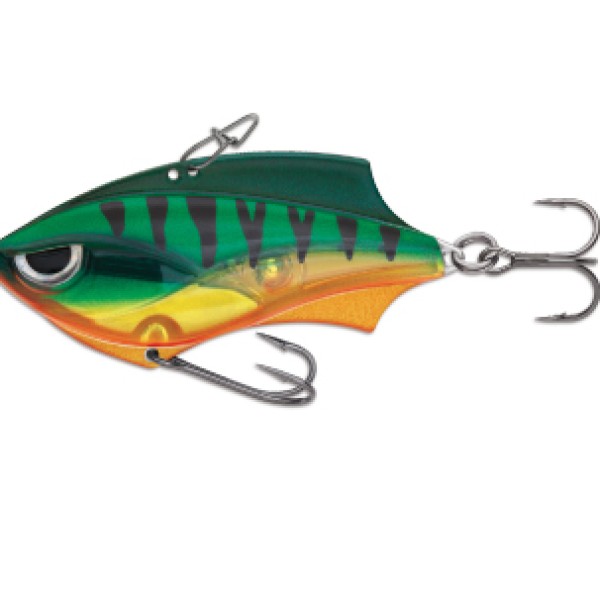Where Do You Catch Australian Bass: Your Complete Guide to Ultralight Fishing
The Tuross River is a prime spot to catch Australian bass, offering some of the best river fishing on the NSW south coast. Whether you’re targeting juvenile bass or adult Australian bass, this pristine waterway provides accessible fishing spots and plenty of action for anglers of all levels.
Australian bass are a small to medium-sized migratory freshwater fish species, scientifically known as Macquaria novemaculeata. They are distinguished by their moderately large eyes, dark olive green back and upper body, and fins with white edges, including prominent anal and pelvic fins and well-developed pelvic fins. This species has developed a survival strategy of adapting to river structure, utilizing cover, and migrating for spawning.
Their distribution extends along the eastern seaboard from Wilsons Promontory in Victoria through south eastern Australia, with Victorian populations being particularly significant. Australian bass are often fished in rivers and streams, lakes, and dams, including stocked locations like Lake Bullen Merri and Blue Rock Dam, which are popular for recreational angling. The experience of chasing bass and targeting wild bass in their natural habitat is highly prized by anglers, as these wild fish display unique behaviors and offer a rewarding challenge. Related native species include golden perch and estuary perch, which share similar habitats.
During early autumn, bass movement patterns shift, making this a key period for anglers. Adult fish reach sexual maturity at specific ages, and their eggs are non adhesive, which is important for their spawning success. Legal size regulations apply to harvested bass, ensuring sustainable populations. When fishing, bass are often caught using a variety of baits and lures, including scrub worms, lipless crankbaits, and surface lures, with careful attention to retrieval techniques and selecting the appropriate weight for lures. Bass are known for feeding at the water's surface, especially at night.
One of the reasons the Tuross River is so special for bass fishing is the lack of barriers like weirs or dam walls. These unobstructed waterways allow bass to complete their natural spawning runs to salt water and estuary environments, maintaining healthier fish populations for anglers to enjoy. The river system includes streams, rivers and streams, and deep water pools, providing diverse habitats. Whether you’re after juvenile bass or their larger, adult counterparts, this river is perfect to test your skills and catch some truly impressive fish.
Introduction to Ultralight Fishing for Australian Bass
Ultralight fishing for Australian bass is one of the most exciting ways to experience the thrill of freshwater angling in Australia’s coastal rivers, streams, and lakes. These iconic sport fish, known scientifically as Macquaria novemaculeata, are prized for their aggressive strikes, spirited fights, and the challenge they present to anglers using light gear. Whether you’re fishing the winding rivers of New South Wales, the tranquil lakes of Victoria, or the hidden streams along the south coast, targeting bass with ultralight tackle brings you closer to the action and demands a refined approach.
To catch Australian bass, it’s important to match your gear to the fish and the environment. Ultralight rods and reels, spooled with light line, allow for precise casting and delicate lure presentations—perfect for sneaking lures into tight spots beneath overhanging trees or along shaded banks.
Soft plastics and surface lures are favorites among anglers, as they mimic the varied diet of bass, from aquatic insects to small fish. Surface fishing, especially during low light periods, can produce explosive strikes that make every cast an adrenaline rush.
Adult Australian bass are highly adaptable, moving between freshwater and saltwater environments throughout their life cycle. This means you’ll find them in a range of habitats, from the upper reaches of rivers to brackish estuaries and even in some lakes. Understanding their seasonal movements and preferred structure is key to increasing your catch rate. Whether you’re a seasoned angler or just starting out, ultralight fishing for Australian bass offers endless opportunities to test your skills, explore new waters, and enjoy the unique beauty of Australia’s eastern freshwater perch fisheries.
Understanding Tuross River Bass Behaviour
Australian bass are catadromous—that’s a fancy scientific term meaning they migrate downstream to spawn in brackish or saltwater during winter, then head back upstream to freshwater as things warm up. This migration occurs in rivers and streams and includes movement into estuary and salt water environments.
Think of it like a predictable seasonal highway system, and once you understand their travel patterns, you’ll know exactly where to find them. Adult fish undertake this journey upon reaching sexual maturity, making the migration an essential part of their life cycle.
During the warmer months, bass hang out in the freshwater reaches of the Tuross River. As temperatures cool and winter approaches, they start their downstream migration to brackish water for spawning. In early autumn, bass may be found in deep water pools as they prepare for migration.
Come spring—when bass season opens on 1st September—they’re making their way back upstream, hungry and aggressive after spawning.
This migration pattern is crucial for ultralight anglers because it tells you where to focus your efforts throughout the year. Spring sees bass in the upper brackish and mid-freshwater sections, while summer finds them well up into the freshwater reaches where the structure is prime and the food is plentiful. By targeting the right locations and times, more bass can be caught.
Prime Bass Habitat in the Tuross River
The Tuross River supports a healthy population of wild bass, known for their elusive nature and strong fight. Their survival strategy involves utilizing various types of cover and structure throughout the river, adapting to changing conditions to maximize their chances of ambushing prey and avoiding predators.
-
Snags and Structure
Submerged logs are absolute bass magnets in the Tuross River. These snags provide ambush points, shelter, and attract baitfish.
When you’re scanning the water, look for logs that extend into deeper water or create current breaks. Bass will sit on the upstream or downstream sides, waiting for prey to wash past, and many are caught by anglers targeting these prime locations.
Rock bars are another goldmine. The Tuross has plenty of natural rock formations that create current eddies and drop-offs.
Bass use these spots to conserve energy while staying close to feeding opportunities. Focus on areas where the current hits the rocks and creates slack water pockets behind them—these are often where bass are caught.
-
Undercut Banks
The Tuross River’s banks offer excellent undercut sections where bass hide during bright conditions. These spots provide shade, protection, and a steady supply of terrestrial insects falling from overhanging vegetation.
Accuracy is key here—you need to get your lure right up under the bank where the bass are waiting.
-
Overhanging Vegetation
Trees leaning over the Tuross River create some of the most productive bass habitat you’ll find. Cicadas, beetles, and other terrestrial insects regularly fall from these trees, training bass to patrol these areas. During summer, when insect activity peaks, these spots become feeding stations, and bass are often caught feeding near the water's surface.
-
Deep Pools
The Tuross has numerous deep pools where bass hold during bright daylight hours. These deeper sections provide cooler water temperatures and serve as staging areas between feeding periods. These deep water habitats are classic features of rivers and streams like the Tuross. Look for pools with some current flow—stagnant water rarely holds active bass.
-
Current Eddies
In the faster-flowing sections of the Tuross, bass use current eddies to conserve energy while staying in feeding position. These are typically found behind rocks, fallen trees, or where the river bends and creates slack water areas.
Reading the Water: Decoding Tuross River Clues
Mastering the art of reading the water is essential for any angler hoping to catch Australian bass in the Tuross River. This scenic waterway in southern New South Wales is renowned for its healthy bass population, but success here depends on your ability to interpret the river’s subtle signals. The Tuross is full of classic bass habitat—rock bars, shallow water stretches, and overhanging trees—all of which provide shelter and feeding opportunities for these cunning fish.
Start by scanning the river for visible structure. Rock bars are hotspots for catching Australian bass, as they break up the current and create ambush points where bass can wait for small fish or aquatic insects to drift by. Shallow water near these structures often holds actively feeding bass, especially during early morning or late afternoon when light levels are low. Overhanging trees are another key feature—these shaded areas attract bass looking for cover and a steady supply of insects falling from above.
Pay close attention to the movement of the water. Eddies, current seams, and backwaters often concentrate food and provide resting spots for bass. Look for subtle changes in surface texture or areas where debris collects, as these can indicate slower water where bass are likely to be holding. By piecing together these clues—structure, shade, current, and food sources—you’ll be able to pinpoint the most productive spots and increase your chances of catching Australian bass in the Tuross River. With practice, reading the water becomes second nature, turning every outing into a rewarding hunt for one of Australia’s most sought-after river fish.
Seasonal Bass Patterns in the Tuross River
Spring (September-November)
Spring marks the start of bass season, and it’s arguably the most exciting time to fish the Tuross River. Bass are post-spawn and incredibly receptive to lures. You’ll find them in the upper brackish sections and moving into mid-freshwater areas.
This is prime time for covering water with reaction baits. Spinnerbaits, chatterbaits, and shallow-running crankbaits excel during spring because bass are actively feeding and willing to chase down moving lures. Focus on rock bars, current eddies, and any snags with current flowing around them.
Summer (December-February)
Summer brings the surface bite that makes bass fishing addictive. As temperatures rise, bass move into the middle and upper freshwater reaches where overhanging trees provide shade and terrestrial food sources.
Early morning and late evening become prime time for topwater fishing. When the sun is high, focus on shaded areas under trees and undercut banks. Cicadas and other insects are active, so bass expect food to fall from above.
Autumn (March-May)
Autumn sees bass beginning their downstream migration. In early autumn, bass may be found moving through streams and deep water sections of rivers and streams as they start this journey. The key during this period is covering water because fish are on the move. All the structure you targeted during spring and summer remains productive, but you need to work harder to find where the bulk of the fish are positioned.
River flows often increase during autumn rains, which can trigger feeding activity. Pay attention to water temperature, moon phases, and weather patterns—these factors influence how far downstream the bass have moved. During these periods, bass can be caught by targeting the right locations and adapting your techniques to their changing behaviour.
Ultralight Lure Selection for Tuross River Bass
Spring Arsenal
Spring bass fishing in the Tuross River is all about versatility. Bass are hungry and willing to eat various lure types, so don’t be afraid to experiment.
Shallow and deep-diving crankbaits work brilliantly when bass are relating to structure. Lipless crankbaits are also a versatile option, effective in both shallow and deep water, and are especially useful when targeting bass in lakes and dams. Choose natural colours like yabby or small baitfish patterns. For snaggy areas, skirted jigs and spinnerbaits let you work through cover without constant hang-ups.
Soft plastics rigged on light jigheads are perfect for finicky bass or when you need to slow your presentation down. Small paddle-tail swimbaits and curly-tail grubs shine during cooler spring mornings. Selecting the right weight for your soft plastics and lures is important to ensure optimal presentation in different water depths and current conditions.
Summer Topwater Magic
Summer topwater fishing on the Tuross River is pure addiction. Small poppers, stick baits, and cicada imitations work brilliantly during low-light periods and around shaded structure. A surface lure is especially effective for eliciting explosive surface strikes from aggressive bass during dawn and dusk.
When working topwater lures, patience is crucial. Let your lure sit motionless for several seconds after landing—bass often strike during these pause periods. If you’re fishing shaded areas during the day, try skipping lures under overhanging branches.
For subsurface presentations, lightly weighted soft plastics and small crankbaits work well when bass are holding deeper in the shade.
Year-Round Essentials
Regardless of season, certain lures consistently produce bass in the Tuross River. Small spinnerbaits are incredibly versatile—they work through snags, create flash and vibration, and can be retrieved at various speeds. Vary your retrieval techniques, such as changing speed or adding pauses, to maximize your chances of getting bass caught.
Soft plastics remain a staple because they allow precise presentations around structure. Carry a range of weights and hook sizes to match different conditions and cover types.
Small metal vibes work exceptionally well for covering water and finding active fish, especially during cooler months when bass are deeper. Scrub worms are also an effective natural bait option, and many bass have been caught using them, especially in lakes and dams where stocked populations thrive.
Techniques for Tuross River Success
Reading the Water
Success on the Tuross River starts with understanding what you’re looking at. Bass rarely sit in featureless water—they’re always relating to something. Scan for visible structure first, then consider current patterns, depth changes, and shade.
During spring, focus on transition areas where brackish water meets freshwater. Bass stack up in these zones as they move upstream. Many of the best bass are fished from these areas, and some of the biggest fish are caught here. Summer fishing means looking up into the trees—if there’s good overhead cover, there’s likely a bass underneath it.
Presentation Tips
Accuracy trumps distance when fishing the Tuross River. Bass are often tight to specific pieces of structure, and getting your lure within centimetres of the target makes the difference between strikes and blanks.
Practice different casting techniques, including skipping lures under low branches and pitching into tight spots. Ultralight gear actually helps here because lighter lures are easier to place accurately. Experiment with different retrieval techniques—vary your speed, add pauses, or try erratic movements—to trigger more strikes from wary bass.
Working Structure
When fishing snags and rock bars, always consider the current direction. Bass typically position themselves to ambush prey being swept downstream, so present your lure from the appropriate angle.
Don’t just cast at structure—cast past it and work your lure through the strike zone. Using the correct weight for your lure can help you present it more effectively and keep it in the strike zone longer. This approach looks more natural and often triggers more aggressive strikes.
Frequently Asked Questions
Where do you catch Australian bass?
Australian bass are found in rivers and streams, lakes, and dams along the east coast. In the Tuross River specifically, you can target wild bass in natural habitats with structure like snags, rock bars, undercut banks, and overhanging vegetation. Stocked bass can also be caught in impoundments such as lakes and dams. Bass can be caught in both deep water and shallow areas, depending on the season and conditions. During spring, focus on upper brackish and mid-freshwater sections. Summer fishing is best in the middle to upper freshwater reaches.
What is the best time of day to catch Australian bass?
Dawn and dusk are prime times for bass fishing, especially during summer when topwater fishing with a surface lure excels. During spring and autumn, bass can be active throughout the day, particularly on overcast days. Night fishing can also be productive, especially around structure with ambient light.
Are aussie bass hard to catch?
Australian bass can be challenging but aren’t impossible to catch. They’re structure-oriented and respond well to accurate presentations. The key is understanding their seasonal patterns, using appropriate lures, fishing the right habitat, and being aware of legal size regulations for harvesting bass. Beginners often succeed by focusing on obvious structure like snags and overhanging trees.
Can you get bass in a river?
Absolutely! Rivers and streams like the Tuross are commonly fished for Australian bass. River bass are often more aggressive than their impoundment cousins because they deal with current and have to actively feed. Bass migrate between freshwater, estuary, and even salt water environments, especially during spawning. Early autumn is a key period for movement, as bass shift habitats and feeding patterns. Rivers provide the structure, current breaks, and food sources that bass need to thrive.
Making the Most of Your Tuross River Adventure
The Tuross River offers some of the most rewarding bass fishing you’ll find, especially for ultralight enthusiasts. There’s a unique thrill in targeting wild bass and the satisfaction that comes from having caught them in such a pristine environment. The combination of wild fish, pristine habitat, and minimal fishing pressure creates an experience that’s hard to match.
Remember that bass fishing is as much about problem-solving as it is about casting technique. Each trip teaches you something new about fish behaviour, seasonal patterns, or lure presentations. Keep a fishing journal to track what works during different conditions—this information becomes invaluable over time.
Most importantly, respect the resource. Australian bass have specific closed seasons for good reason. Give them space to spawn and breed during winter months, and practice catch and release when possible. The more we protect these fisheries, the better the fishing will be for future generations.
Start planning your Tuross River bass fishing adventure, and remember—every expert was once a beginner. The fish are there, the habitat is prime, and with the right approach, you’ll be hooking into wild Australian bass before you know it. Get out there and experience the Tuross River for yourself—this is a river best fished with respect for the resource.







.png)


 1.png)
 1.png)





.png)



 Newsletter
Newsletter

